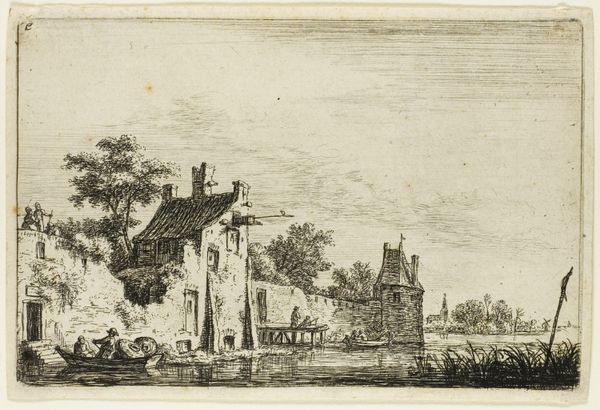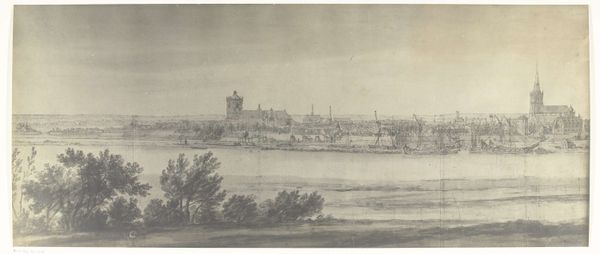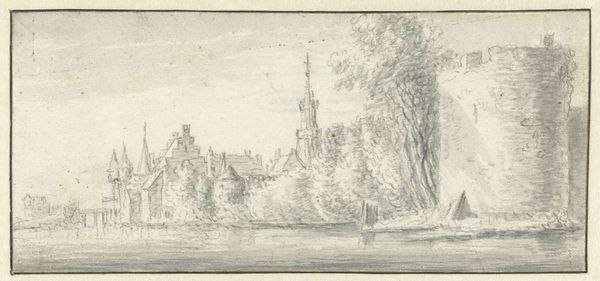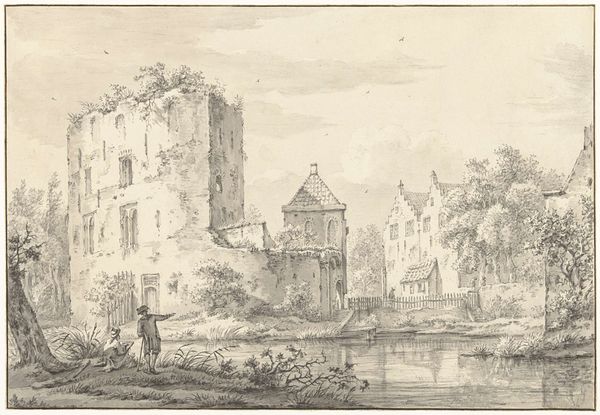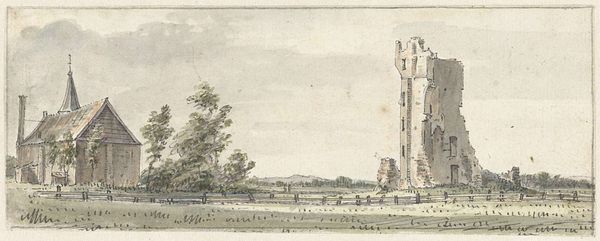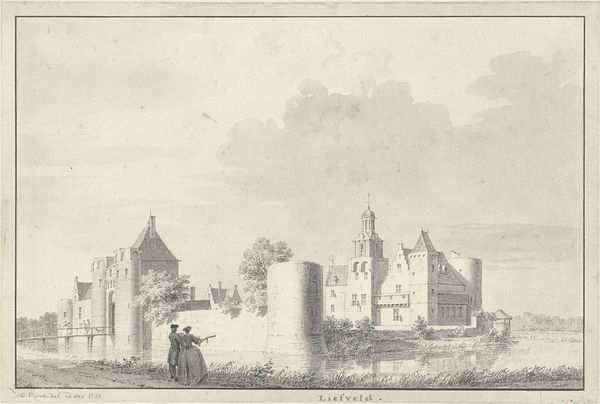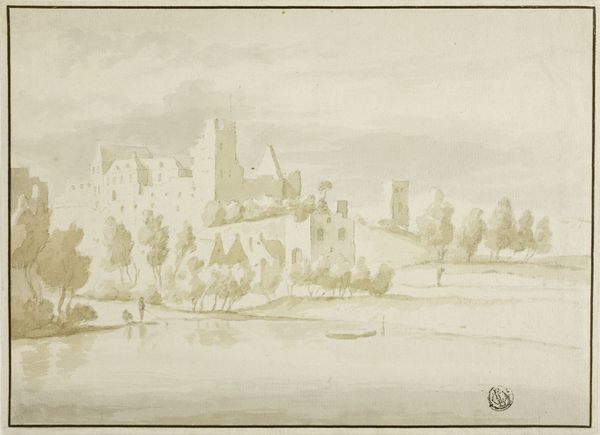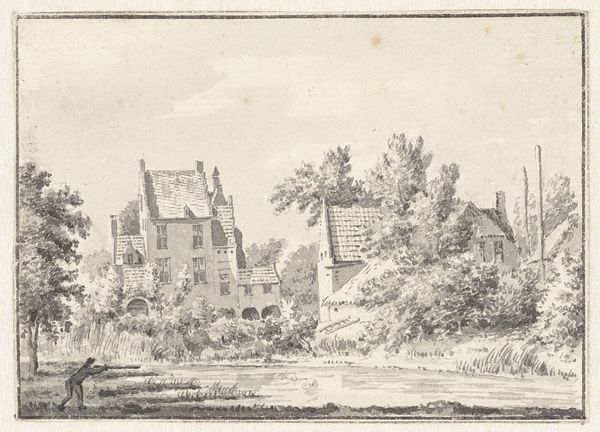
Landschap met de ruïne Huis ter Kleef en twee tekenaars 1742 - 1784
0:00
0:00
hendrikspilman
Rijksmuseum
Dimensions: height 120 mm, width 200 mm
Copyright: Rijks Museum: Open Domain
Hendrik Spilman created this drawing, "Landschap met de ruïne Huis ter Kleef en twee tekenaars," with pen in the 18th century. The neutral palette emphasizes a subtle interplay of light and shadow, lending the landscape a serene yet melancholic atmosphere. Notice how the composition invites the viewer's eye to wander. The horizon line cuts the picture almost exactly in half. In the foreground, Spilman places two figures, the "tekenaars," or artists. The ruin, depicted with precise detail, creates a focal point that draws attention to its decaying structure. In semiotic terms, the ruin destabilizes fixed meanings. Spilman here suggests an engagement with time, entropy, and the transient nature of human endeavors. Spilman's strategic placement of the windmill, the ruin, and the church against the sky constructs a visual dialogue between industry, history, and spirituality. This is typical of 18th-century aesthetic and philosophical concerns with the passage of time. The materiality of the line and composition is more than just representation; it's a meditation on history.
Comments
No comments
Be the first to comment and join the conversation on the ultimate creative platform.
